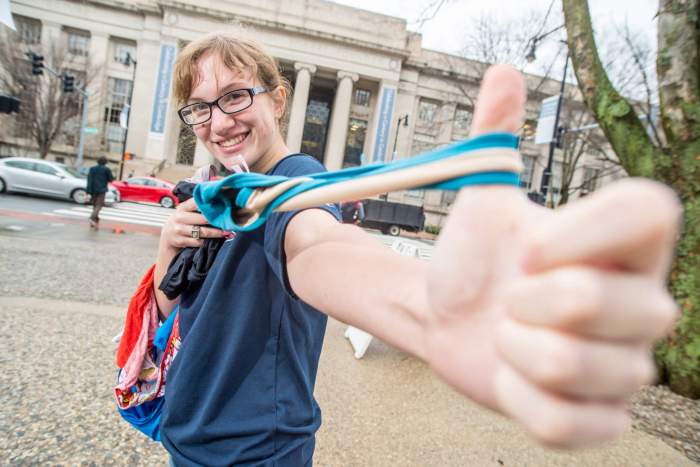From freezing offices to sweltering subway cars, sometimes the temperature of your surroundings just isn’t ideal. But when you can’t control the thermostat, what can you do?
Three MIT grads created a solution: A wearable “thermostat” to warm you up or cool you down as needed.
Called the Embr Wave, the invention has received more than $500,000 in funding since its Kickstarter launched at the end of September, blowing way past the initial $100,000 goal. The Kickstarter ends Oct. 27.
The Embr Wave wraps around your wrist and promises to deliver “thermal relief on demand.”
“The kind of key insight we had is that warming and cooling one spot on your body can improve your overall comfort, without changing your core temperature,” said co-founder Sam Shames. “We all know this intuitively; on a hot summer day at the beach, you dip your toes in the water and feel better.”
The device changes temperature at your control, delivering that sensation to your wrist and thus affecting how your whole body feels.
“Being comfortable means no one specific area of your body is hotter or colder than you like,” Shames said. “In the winter, no matter how many jackets you have on, if your ears are cold, you’re uncomfortable. But if you wrap your hands around a warm mug, that counteracts your ears feeling cold. It sort of cancels it out.”
The Embr Wave lets you personalize those “canceling-out sensations,” he added.
Shames and his co-founders Matthew Smith and David Cohen-Tanugi met at MIT when Shames was an undergrad and the others were earning their PhDs. They created the first prototype of the Embr Wave for a competition in 2013.
The three would work in a campus lab that had the air conditioner blasting in the summer. Their idea started out as an environmental solution to help save building energy costs by letting people customize their temperature.
“The much more immediate value proposition [is that] temperature just feels good. It provides you with relief and makes you feel better in a powerful way,” Shames said. “This feels really good in the same way splashing water after a workout does, or cupping your hands around a hot drink.”
The three are still passionate about pursuing the environmental aspect. They received a grant from the National Science Foundation to work researchers on if the Embr Wave can increase the “float zone,” which Shames described as the range of temperatures you can set a building’s thermostat to and still have occupancy be comfortable.
If it affects that zone even slightly, say allowing buildings to be set at 73 degrees instead of 72, it still has a big impact.
“For every 1-degree difference in the change of a thermostat, you save 10 percent of heating and cooling costs in a building,” Shames said.
This is just the beginning for the founders. They’re hoping to explore how the Embr Wave can be involved in entertainment, virtual reality and even non-verbal communication.
“We see temperature as a really untapped way of interacting with other people and with the world,” Shames said. “We’re excited to help people think about temperature in a different way.”



















